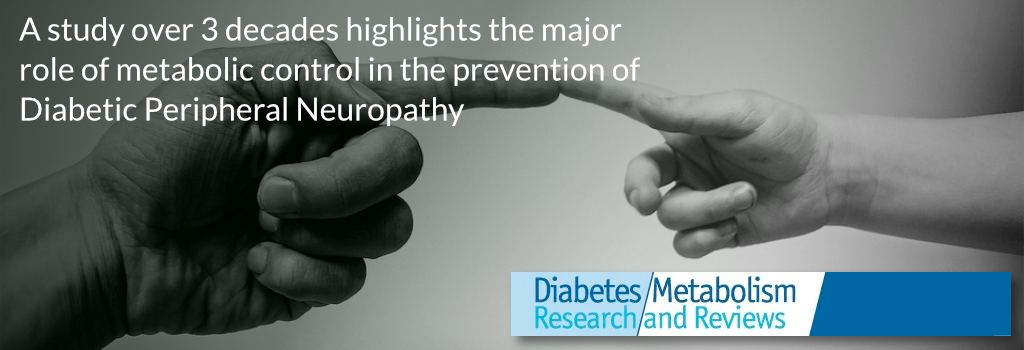25 Jul 2024

A recent study in Sweden has confirmed the prevalence of DPN in people with T1D with longer disease duration (over the course of 30 years). The authors were able to highlight the major role of metabolic control, expressed as hemoglobin A1c (HbA1c). In particular, no patient had developed neuropathy if wHbA1c was less than 62 mmol/mol (7.8%). This result could be easily translated into clinical practice, supporting the relevance of good glycaemic control in subjects with Type 1 Diabetes (T1D).
Aims:
To assess the importance of glycaemic control, expressed as long‐term weighted mean HbA1c (wHbA1c), and other potential risk factors for the development of diabetic peripheral neuropathy (DPN) in subjects with type 1 diabetes (T1D) diagnosed in childhood with a follow-up of 30 years in Sweden.
Methods:
This longitudinal cohort study enrolled 49 subjects with childhood-onset T1D. The mean age at baseline for the initial cohort was 15.7 (±3.4) years with a disease duration of 7.7 (±3.3) years. In the final cohort, subjects were 38.3 (±3.8) years old, with a disease duration of 30.6 (±5.2) years. All subjects at baseline and follow-up were investigated with neurophysiological measurements, blood tests, and clinical examinations. Further, wHbA1c was assessed by integrating the area under all HbA1c values since the diabetes diagnosis. Long‐term fluctuations of HbA1c variability were also computed as the standard deviation of all HbA1c measurements.
Results:
At the time of follow-up 51% (25/49) of the patients fulfilled electrophysiological criteria for DPN. Subjects with DPN had a longer diabetes duration (32.4 ± 4.3 years). Further, subjects with DPN had an overall higher mean HbA1c over time. In particular, the wHbA1c was higher for subjects with DPN than subjects without DPN (respectively 8.4±3.1% Vs 7.6±2.7%, p=0.001). After 30 years of disease, no individual had electrophysiological criteria for DPN with wHbA1c <62 mmol/mol (7.8%), and no individual had clinical neuropathy with wHbA1c <67 mmol/mol (8.3%). Subjects with DPN also showed increased levels of triglycerides and lower levels of HDL, but this association was no longer significant when adjusted for diabetes duration.
Conclusions:
After 30 years of diabetes duration, more than half of the subjects enrolled developed DPN. In addition, metabolic control plays a pivotal role.
Reference. Baldimtsi E, Amezcua S, Ulander M, Hyllienmark L, Olausson H, Ludvigsson J, Wahlberg J. HbA1c and the risk of developing peripheral neuropathy in childhood-onset type 1 diabetes: A follow-up study over 3 decades. Diabetes Metab Res Rev. 2024 Jul;40(5):e3825. doi: 10.1002/dmrr.3825. PMID: 38878301.
Read more
https://onlinelibrary.wiley.com/doi/10.1002/dmrr.3825 (opens in new tab)
